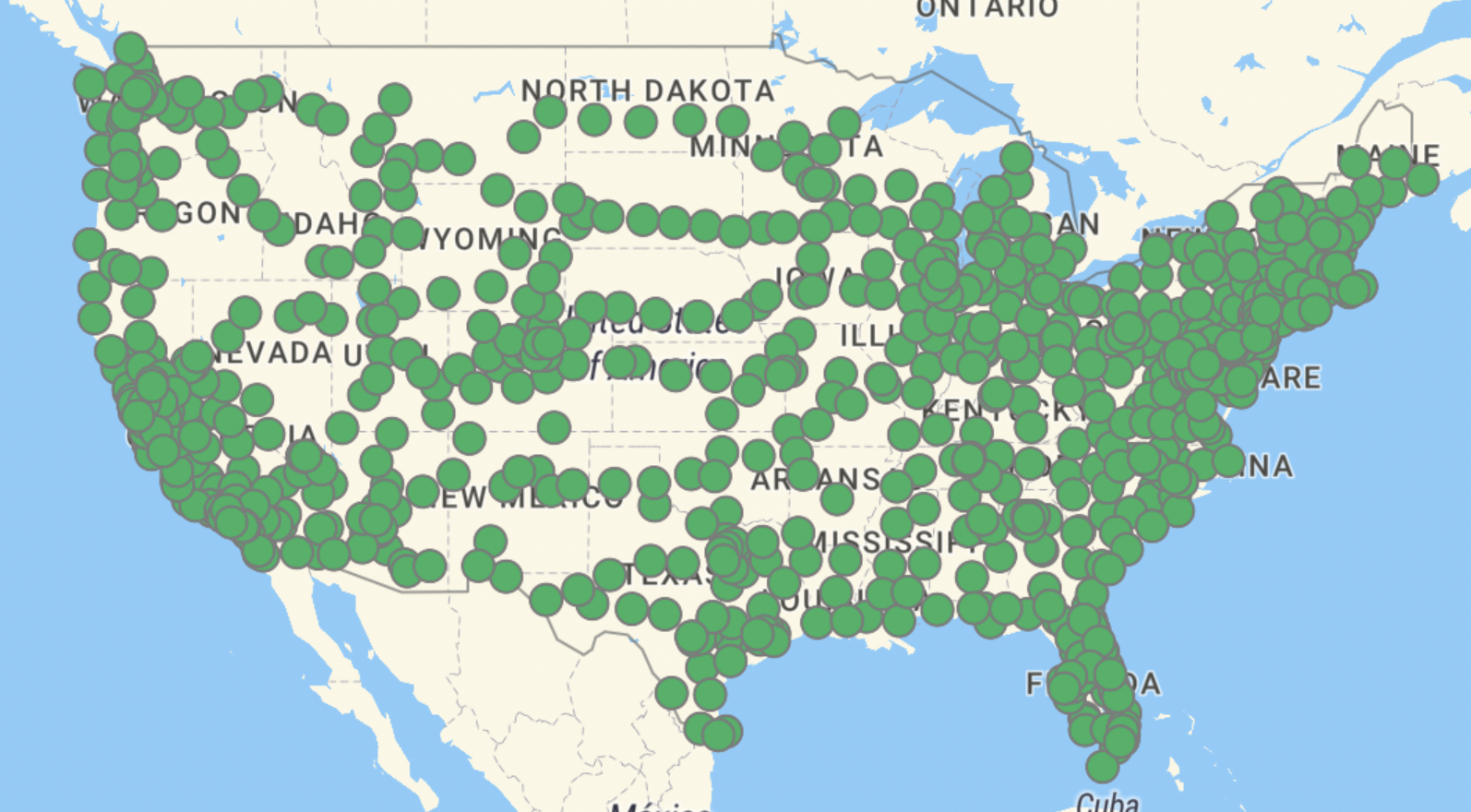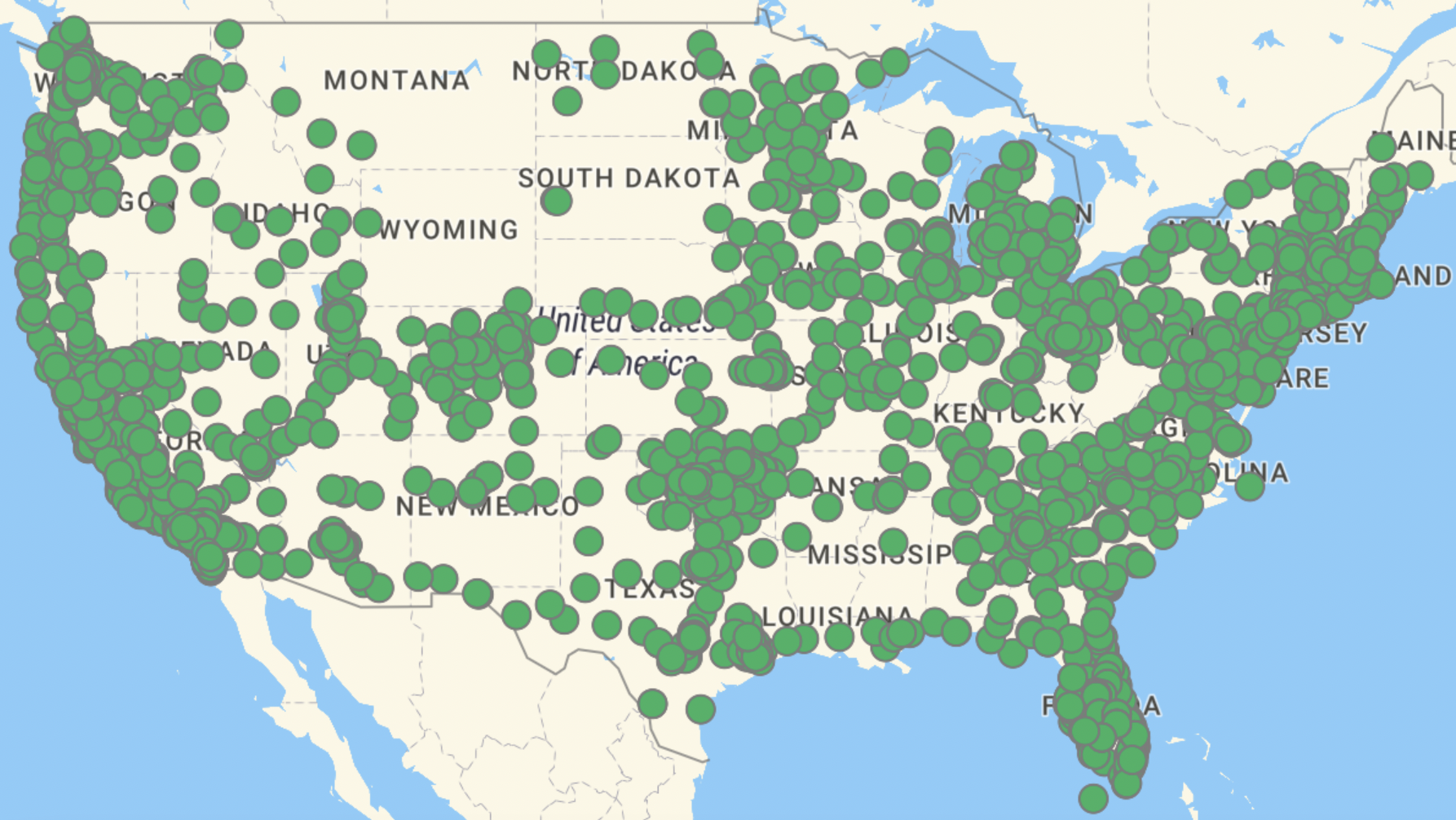As part of its proposed green energy plan, the Biden Administration hopes to add 500,000 new public EV charging ports over the next four years, essentially 5x the current number. This potential infrastructure investment from the US government is considered by many investors as an incremental positive for traditional auto and an incremental headwind for Tesla. We see it as a positive for both, given EV adoption is still nascent at about 2% of new vehicle sales in the US, and building out charging infrastructure should aid broader adoption for all automakers. That’s because a primary hesitancy among prospective EV buyers is a perceived lack of public charging availability, a derivative of range anxiety.
Although the majority of EV charging is and will continue to be done at home (80% according to the Department of Energy), public stations are needed to fill in the gaps, particularly for long road trips and non-homeowners if EVs are to serve as a user’s standalone vehicle.
To date, Tesla is the only automaker to have real success with EVs in the US, maintaining ~80% market share. While the price and quality value proposition of their vehicles is the main reason for this success, we believe their charging network is another. And while more public charging will benefit legacy OEMs as they bring dozens of new EV models into the market over the next few years, we don’t think it will help as much as many are expecting. That’s because non-Tesla EVs rely on a patchwork of third-party charging stations that are inferior in quality and availability. In contrast, we believe Tesla’s vertically integrated, proprietary charging network will continue to be an advantage for the company for the foreseeable future.
Can I charge here?
Tesla vehicles have more charging locations available to them than non-Tesla EVs. At first glance this seems nonsensical, considering there are more non-Tesla charging locations across the US. However, with a simple adapter, Tesla owners can charge at non-Tesla stations, but the reverse does not hold true: non-Tesla vehicles are not compatible with Tesla chargers. Putting it together, there are about 4,900 high-speed charging stations available to Tesla owners and about 3,900 to non-Tesla owners. The irony is that in 2014 Tesla offered to license its vehicle patents to other automakers to create an open standard for charging compatibility, but none of the automakers took Tesla up on its offer.
Doing more with less, the advantage of vertical integration
The beauty of vertical integration is that Tesla does not have to work with other companies to decide where to build stations. This allows them to be more efficient, strategically deploying chargers where consumers need them. Conversely, there are more than 15 third-party charging companies in the US, each building their own stations to serve non-Tesla vehicles. This leads to inefficient allocation. Some quick math will put this efficiency difference into perspective.
First, taking a step back, there are two types of public EV chargers: Level 2 Alternating Current chargers and Direct Current (DC) fast chargers. From a performance standpoint, we believe DC chargers are the only kind that truly satisfy consumer demands, as they charge at a rate roughly 14x faster than Level 2. Specifically, DC provides 60-80 miles of charge in 20 minutes, compared to Level 2 at 3-7 miles per 20 minutes (a recent IHS Markit survey found 58% of respondents said they expect EVs to fully charge in an hour or less).
Now to the quick math.
There are about 975 DC Tesla locations and 3,940 third-party DC locations across the US. The total US EV fleet is around 1m, of which we estimate 750k are Teslas and 250k are from other automakers. Because Tesla drivers can charge at both Tesla and non-Tesla outlets, the ratio of Tesla vehicles to total DC locations is 153 to 1. Conversely, the ratio of non-Tesla EVs to third-party locations is 63 to 1.
Despite a much greater ratio, Tesla owners report higher satisfaction than non-Tesla owners. Tesla is getting more for less. Looking at a map of Tesla DC points across the US shows how the company has deployed them in a diffused pattern. By doing this, they are able to cover gaps where people need chargers most: long road trips (notice the coverage across the middle of the country).

In contrast, below is a map of third-party DC locations. Despite 4x the number of points, larger coverage gaps exist.

Not all charging networks are created equal
EV charging ports are not like gas pumps. There’s more technology underpinning them and electric grid instability is more of a factor than gasoline shortages, leading to more potential breakdowns. Building out its charging network in-house has allowed Tesla to deliver customers a better end-to-end experience. Consumer surveys highlight the difference:
- A recent JD Power survey found that on a 1,000 point scale, satisfaction with the availability of public charging was 305 points higher for Tesla owners than non-Tesla owners. While absolute scores were not given, we estimate the average satisfaction score for non-Tesla owners was around 450 compared to 755 for Tesla owners.
- A survey from the UK showed Tesla’s Supercharger network received a 94 satisfaction score (/100), with the next nine charging stations scoring between 86 and 69.
- 59% of non-Tesla drivers in a Plug In America survey reported having problems with public charging stations, compared to 47% for Tesla drivers. While even the Tesla number is high, it’s a bit misleading because the survey asked EV drivers about problems with public chargers in general, not the specific charging network. Because Tesla vehicles are compatible with non-Tesla chargers but not vice versa, we suspect many of the problems Tesla drivers reported occurred on non-Tesla chargers.
Put simply, Tesla’s charging network is more reliable than its competitors. And reliability is a big deal because non-Tesla DC charging locations only have two charging ports on average. If one is broken and the other is occupied, you’ll likely face wait times of an hour plus. In contrast, each Tesla DC location has about 10 charging ports on average.
The bottom line is that EV adoption will take a step forward over the next four years because the government is going to support them. Increasing public charging infrastructure is a rising tide that will lift all boats. That said, we believe legacy OEMs that rely on an assortment of third-party chargers will continue to be at a competitive disadvantage to Tesla.
